folios
The Magazine of the Washington and Lee University Library

inside features
2 | Sisters at the Loom | Frances Richardson
8 | Art in the Library
12 | Celebrating the Retirement of Tom Camden | Brian Alexander
14 | Redisovering Madison | Byron Faidley
16 | Historic Theses Digitization Project | Paula Kiser
digital humanities
18 | Florence as it Was | Mackenzie Brooks
student spotlight
19 | DCI Capstone | Mackenzie Brooks
20 | Honoring Our 2023 Student Workers | Laura Hewett

departments
1 | Welcome | KT Vaughan
21 | Data Digest | KT Vaughan
22 | New Faces
23 | Way Out | Elizabeth Teaff on the cover
Illustration inside Leyburn Library by Emmaline Nelsen
Icons by Emmaline Nelsen and Billy Chase

Folios fall 2023
Welcome from the University Librarian
Dear Friends,
Welcome to the fall issue of the W&L University Library’s magazine, Folios! In developing this year’s issue, we realized that we wanted to share so much more with you than in past years. Luckily, digital publication means we have the space to tell our stories without worrying about page count.
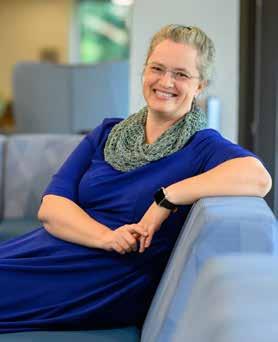
The libraries exist in physical and digital spaces simultaneously. I am particularly excited to share the Sisters at the Loom exhibit that lived in Leyburn for part of this year. In addition, you may be inspired by articles on the digitization of historic undergraduate theses, a new app for checking out print books, community-centered art exhibits in Leyburn Library, and the Florence as it Was digital humanities project.
Some of what you’ll find in this issue are regular features. We are excited to introduce you to new people in the University and Law Libraries, as well as saying goodbye to Tom Camden ’76 on the occasion of his retirement. We also have our annual congratulatory notes for graduating student workers and Digital Culture and Information minor degree students who have completed their capstone projects.
So much of the work represented in these pages is possible because of our library partners on and off campus. Many thanks in particular to Frances Richardson, Professors George Bent and Brian Alexander, our colleagues in the Law Library, and the Museums at W&L for being part of this issue.
Washington & Lee University
kvaughan@wlu.edu
I am also grateful to you, dear reader. Your support as a colleague, friend, or contributor is part of our success. Please reach out to me if you have questions or ideas for us.

Support the Library — Join the Friends! library.wlu.edu/friends
Prof. KT Vaughan , MSLS, EdD Professor and Hal F. and Barbra Buckner
Higginbotham University Librarian
WELCOME .folios - 1 - Fall - 2023
Sisters at the Loom
Frances Richardson rediscovers a community of weavers in Panther Gap.
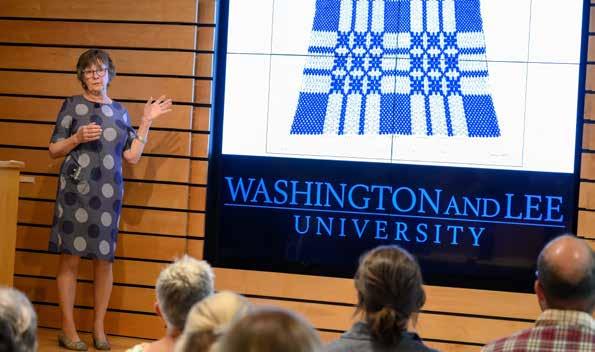
“Here are the Baer Family records... And here are the weaving patterns.”
With two short sentences, Lisa McCown, who knows her collection and her clients so well, launched me on a year’s journey that culminated with the exhibition “Sisters at the Loom.”
The patterns, or drafts, are twenty-one strips of paper covered in numbers and hatch marks that denote how to weave different fabrics. They were collected by the sisters of the Baer family who lived at Panther Gap, along the waters of the Big Calfpasture River and Brattons Run.
The patterns, despite looking like a strange code, carry a lot of evidence. Some bear dates, the earliest being 1832 and the oldest 1847. Some bear names – Mary, Anna, and Rachel Baer, the women who collected the drafts; Charlotte Welchhans, Mary Maggerd, and Susannah Johnson, neighbors who shared the drafts. Some bear holes made by the pins the weavers used to keep track of where they were in the pattern, showing us that the patterns weren’t just collected, but also used.

SOME OF THE PATTERNS BEAR DATES, THE EARLIEST BEING 1832.
FEATURE .folios - 2 - Fall - 2023
 19th century barn-frame loom owned by Frances Richardson, affectionately known as “Violet.”
Opposite: Frances takes her audience back in time.
19th century barn-frame loom owned by Frances Richardson, affectionately known as “Violet.”
Opposite: Frances takes her audience back in time.

FEATURE .folios - 4 - Fall - 2023
detail baer draft #14 : the freemasons' coat of arms
Overshot coverlet design woven in natural cotton and navy wool. Weaver: Catharine Hagan

.folios - 5 - Fall - 2023
detail baer draft #20
Overshot coverlet design woven in natural cotton and navy wool. Weaver: Frances Richardson

FEATURE .folios - 6 - Fall - 2023
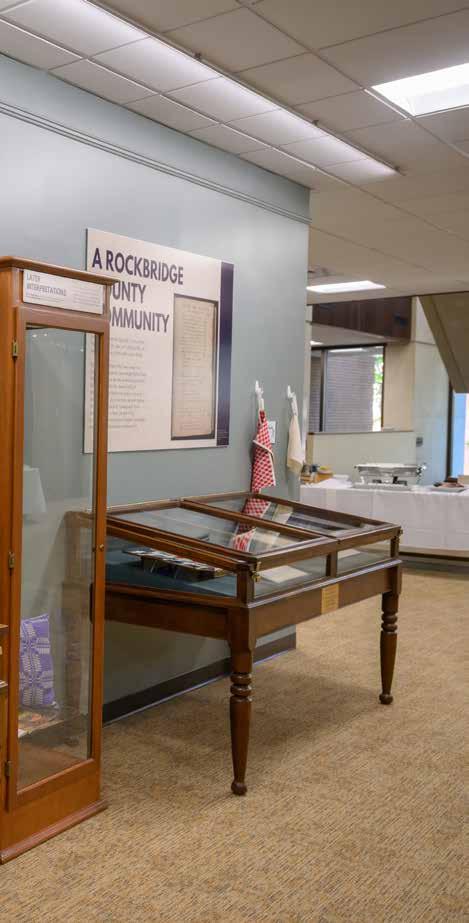
At first, I just wanted to

I WAS ABLE TO PIECE TOGETHER A PICTURE OF THEIR EXTENDED FAMILY.
find out what fabrics the women produced. To do that, I needed to translate the old codes into modern notation. An old textbook helped, but it only gave me part of the information I needed to understand what fabrics the women wove. I turned to Gay McGeary, a weaver and textile history expert. She was able to determine the other parts of the information I needed and we used a computer program to make diagrams, or “drawdowns,” of the fabrics. I shared the knowledge with fellow weavers and we launched a project to make modern samples of the cloths.
It turned out that the drafts were for coverlets (bedcovers with geometric designs, usually woven in red or blue on a natural ground), counterpanes (bedcovers woven from white cotton with textured weaves), and table linens. I wondered what significance the drafts held that they were so carefully preserved by the original users and their descendants. Using Baer family papers, I was able to piece together a picture of their extended family and their movements and the neighbors they did business with and whose families they married in to. Records of the local general stores, Wise’s and Sterrett’s, showed not only that the Baer family bought the supplies such as dye and cotton yarn to weave the patterns, but that many of their neighbors did, too.
What emerged was a picture of a thriving community of farming families and store owners in Panther Gap. The men operated grist, saw, and carding mills, and traded farming skills and timber. The women exchanged patterns for special fabrics and quilts. No wonder the drafts were saved. They showed the weavers’ skill and artistry at the same time as they commemorated the family and neighborhood relationships they held dear.
As modern weavers used the drafts, we felt a kinship with the weavers of Panther Gap. We felt we were indeed sisters at the loom. n
For more of Frances’s talk: go.wlu.edu/francestalk
To see a loom in action: go.wlu.edu/loomdemo
.folios - 7 - Fall - 2023
Exhibit wall interpreting the Baer Family and the community in which they operated, sharing patterns with neighbors, processing raw materials, and purchasing supplies to create their functional works of art.
Art in the Library
Take a mini-tour with us.
When you visit Leyburn Library, you will no doubt notice a plethora of new and vibrant artwork on our walls. Much of this artwork, some of it new to the university and some from our existing collection, is part of a long-standing collaboration between the University Library and The Museums at W&L. In particular, Senior Curator of Art Patricia (Pat) A. Hobbs, has worked for years to bring colorful paintings into Leyburn. This natural cross-departmental collaboration allows for the library’s walls to act as an extension of The Museums. Here are several recent highlights from our partnership.
During the summer of 2021, ITS, library staff, students, and visitors, were invited to vote for their favorite paintings in an effort to “crowd source” new artwork in Leyburn. In August of 2021, everyone who entered Leyburn was encouraged to pick their favorite paintings from a display of images from the collection of the Museums. Pat Hobbs was given the titles of the paintings with the most votes and she, and others in Museums, began the process of hanging those artworks on the floors of Leyburn.
With the 2021 opening of the Harte Center for Teaching and Learning, we had opportunities to add more artwork to Leyburn. The “Chaos in Color” paintings by contemporary
Opposite: judgement (no date)
Evelyn Dawson
Oil on canvas Gift of Larry Wynn ’34
artist Almigdad Aldikhaiiry, newly acquired by the university, are on exhibit there. Aldikhaiiry is a Sudanese artist currently based in the U.S. The works were acquired from an exhibition in Spring Term 2019 curated by students in ARTH 398 Seminar in Museum Studies. For more information: go.wlu.edu/chaoscolor
This past academic year, colorful paintings by Evelyn Dawson (1909-1990), that the artist called “Inscapes,” were hung on lower level 2 of Leyburn. These works are nonobjective paintings that convey emotion and allow the viewer to interpret them however they wish. Non-objective art is a type of abstraction that does not represent people, nature, or objects. Dawson said that these works were rooted in her unconscious mind and only once they were finished did she title them. Anecdotally, students have told us that they enjoy studying surrounded by colorful paintings. The Dawson works certainly fill that desire. Students working with the Museums curated a playlist inspired by the works. The QR codes on the labels of some of Dawson’s paintings displayed on the second floor of Leyburn will take you to music selections. Student reflections about Dawson and her works can be found in the Museums’ online exhibitions at: go.wlu.edu/studentreflections
FEATURE .folios - 8 - Fall - 2023
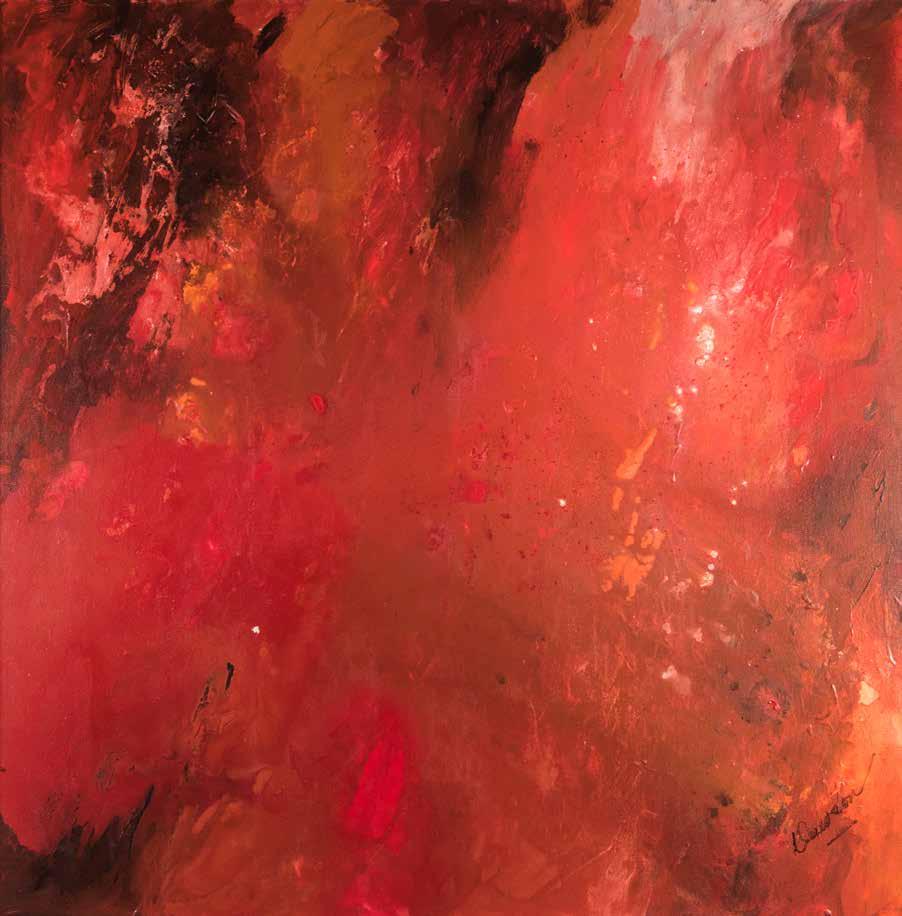
.folios - 9 - Fall - 2023
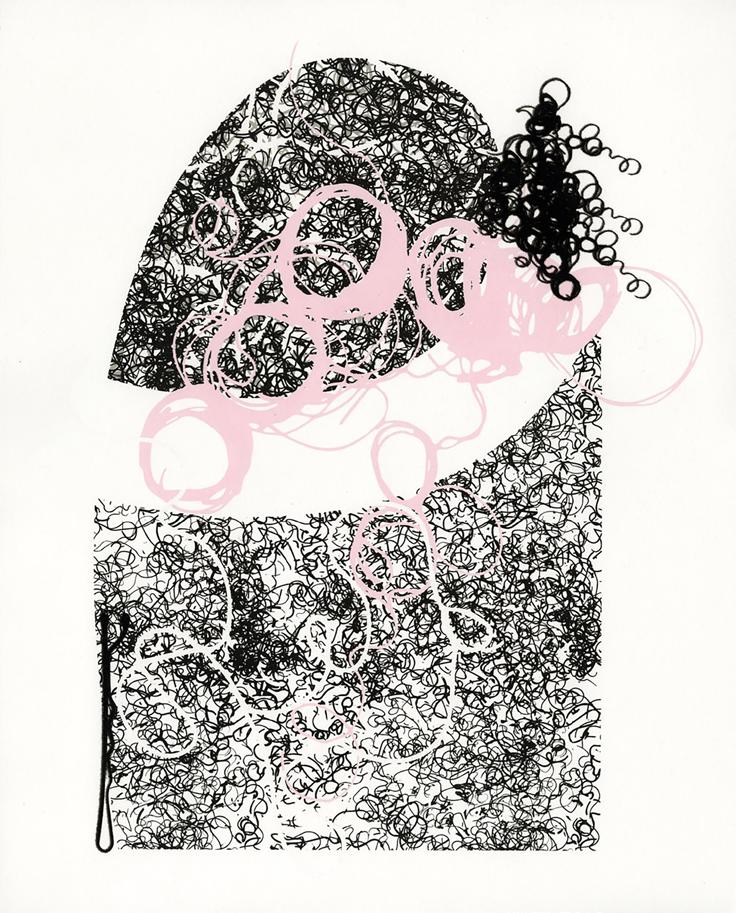
FEATURE .folios - 10 - Fall - 2023

This past spring, the Museums installed an exhibit on the main floor of Leyburn called “We Love Life Whenever We Can.” Artwork for this exhibit is on loan from the Arab American National Museum, a Smithsonian affiliate. In celebration of National Arab American Heritage Month, the exhibit presents the cultural, historical, and political legacies of five dynamic Arab American artists and scholars. It’s also available on the Museum website at: go.wlu.edu/lovelife
Finally, Leyburn is fortunate in that we are the location for some of the artwork purchased as part of the blockbuster Museum’s exhibit on the work of Sharon Norwood. You can see more on the museum website under “Past Exhibitions” at: go.wlu.edu/rootofthematter
Above: CLARION CALL (2020)
Almigdad Aldikhaiiry
Oil on canvas Museums at W&L
Opposite: THIS SIDE OF ETERNITY (2021)
Sharon Norwood
A collaboration with Longroad projects and Erie Arts and Culture with Aaron Levy Garvey and Patrick Fisher
Screenprint Museum Purchase
In addition to working with the Museums, Leyburn hosted two Mudd Center exhibits. In the 2021-2022 academic year, Leyburn was part of the Mudd Center’s Community Mosaic Project. The work was displayed on the main floor of Leyburn: go.wlu.edu/mosaiccommunity
For the 2022-2023 academic year, the library was part of the Mudd Center’s yearlong exploration of Beneficence: Practicing an Ethics of Care. As part of a specific project called the CareLab Pet Project, participants were invited to submit images of their animal companions along with short essays about their relationships with animals. Working with the Museums on this project as well, select images and essays were displayed in Leyburn. To view the photos and read the stories: go.wlu.edu/petproject n
.folios - 11 - Fall - 2023
Tom Camden '76 , Associate Professor and Head of Special Collections, chats with Michelle and Neil Treger ’79L at Tom's retirement celebration.
Below:
Tom in his element, sharing treasures from the vault with a group of students.
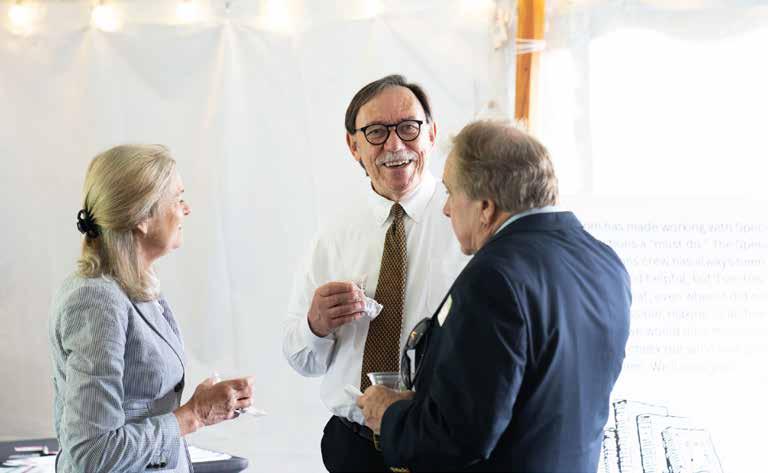

FEATURE .folios - 12 - Fall - 2023
Celebrating the Retirement of Tom Camden ’76
Professor Brian Alexander (Politics) reflects on a career well-served in an excerpt from his retirement citation, delivered at the May 22, 2023 university faculty meeting.
Note: The full text of the citation is available at go.wlu.edu/retirementcitation
AAt W&L, one of the things we treasure most is our community. This includes the students, the faculty, administrators and staff, the folks of Lexington and Rockbridge County, and, of course, our alumni. In Tom Camden, we have someone whose life comprises each of these roles, and in his extraordinary time as Associate Professor and Head of Special Collections and Archives he has served and enrichened everyone who has even one of those connections to our university.
W&L Special Collections under Tom’s leadership is a special place of intellectual discovery, dialogue, and serious scholarship. Without being labeled a “center” or an “institute” or any of the aspirational terms so many organizations adopt, W&L Special Collections has become a focal point of scholarship and research and the center of an intellectual community at W&L without equal. On any given visit, it is possible that you may encounter a poet and friend of Allen Ginsberg; an accountant making new discoveries about the history of slavery; students visiting during a course in Arabic; a musical theater scholar. Or, as I have seen when I have taken my students to Special Collections, a nineteen-year-old feeling the first sparks of wonder at an ancient manuscript, alongside a ninetyyear-old preparing a lifetime of artifacts for donation.
There is something about Tom that I can’t describe because you simply have to experience it: Tom Camden can tell a story like no other. With Tom, not only do we have an accomplished Director of Special Collections, we have someone who brings the past alive, and who makes research seem like an adventure. In the tradition of the best story tellers, Tom possesses a bit of magical realism that not only brings the materials of Special Collections to life, it gives them a soul.

We own a rare book with handwritten notes by Thomas Jefferson in it. In presentations at Special Collections, Tom shows this book to the audience, and they’re agog being so close to this extraordinary piece of Jeffersonian history. But then he opens to a particular page and with the contagious giddiness of a schoolboy he shows the audience an ink smudge that must be the fingerprint of the third President of the United States. The crowd loves it. Now for me, as a drab social scientist, I’ll retort that maybe we need further evidence that this is Jefferson’s thumbprint. But as Tom tells it, it is absolutely true, both real and full of wonder. Gabriel García Márquez couldn’t do better. When you hear such stories from Tom, you see previously unknown connections, and you leave ready to dig into the research, inspired and full of fresh ideas.
WITH TOM, WE HAVE SOMEONE WHO MAKES RESEARCH SEEM LIKE AN ADVENTURE.
Tom has said of his return to W&L in 2013, that he “came home.” Indeed, Washington and Lee University is Tom’s home, even in retirement. And it is a better home for all of us because of the service and the spirit that he has shared over this past decade. W&L will not be the same without Tom, but we owe it to him as we owe it to this institution to continue the tradition that he brought so fully to life. n
.folios - 13 - Fall - 2023
Rediscovering Madison
Byron Faidley reveals how a piece of early American history recently came to light.
aAfter winning our nation’s independence from Great Britain in 1783, many questions about our rights in the new nation were left unanswered. State legislatures soon began work on new constitutions, determining policies and defining rights that have had a lasting effect. One major question was the relationship between the government and religion. Recently, one of the documents that played a pivotal role in that debate was rediscovered in our own Special Collections and Archives.
In 1785, Zechariah Johnston, a veteran of the American War for Independence and attendee of Augusta Academy, found himself not only as a representative from Rockbridge County in the Virginia House of Delegates, but also as the chair of their committee on religion. The previous year, Patrick Henry submitted a bill that called for the voting populace in Virginia to determine which religious institution in each county would receive money from public taxation. While this idea seems to be an improvement on the previous system which sent everything to the Church of England, others, like Thomas Jefferson and James Madison, thought it would be better still to remove the idea of taxing the people in the name of religion. At the time, Jefferson was away in France on a diplomatic mission, which left primarily James Madison to deal with the issue. Madison drafted “A Memorial and Remonstrance,” as a rebuke of Patrick Henry’s proposed bill.
While the work was published anonymously (James Madison only taking credit in 1826) the piece had a positive effect. It paved the way for Thomas Jefferson’s “Virginia Statute for Religious Freedom,” passed in 1786 with Johnston as a proponent, and was arguably a springboard for the First Amendment to the United States Constitution. This early draft was given to Zechariah Johnston, who supported the separation of church and state and was so instrumental in the passing of Jefferson’s statute.
I discovered our draft copy in the Zechariah Johnston Papers during a collections audit, where the Special Collections and Archives staff try to put eyes and hands on every item in our collection to determine cataloging, digitization, and conservation needs. n
Read more about the context and history of the document through the National Archives, here: founders.archives.gov/documents/Madison/01-08-02-0163
Opposite: The first page of a MEMORIAL AND REMONSTRANCE AGAINST RELIGIOUS ASSESSMENTS (1785)
Courtesy of Special Collections and Archives, Leyburn Library
FEATURE .folios - 14 - Fall - 2023
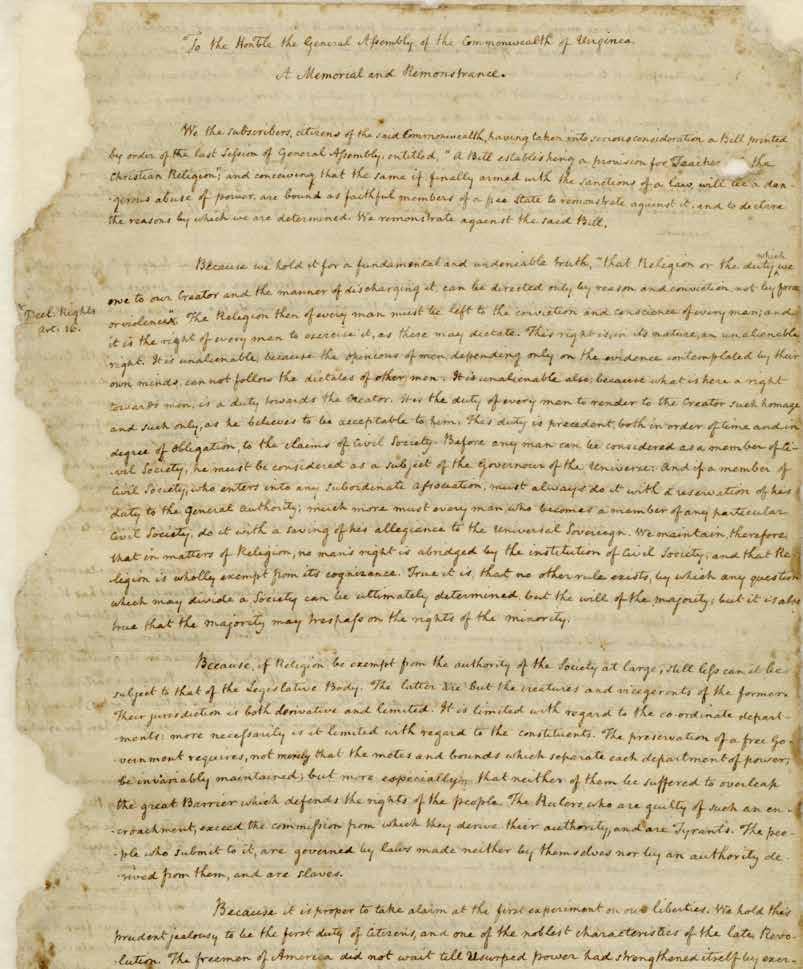
.folios - 15 - Fall - 2023

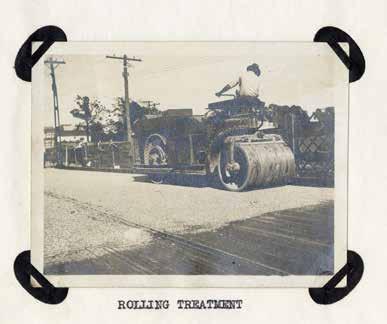

.folios - 16 - Fall - 2023 FEATURE
Historic Theses Digitization Project
Paula Kiser, Digital Scholarship Librarian, shines a light on a century of student scholarship.
THE LIBRARY’S latest large-scale digitization project is the Special Collections and Archives Honor’s Thesis Collection. The oldest item in this collection dates back to 1890 and the materials continue through 2014, at which point the University required students to submit their honors theses electronically. There are 1,324 items in this collection. They provide a fascinating snapshot of the programs available over the years, the wide range of topics of interest to students, and the technology of student scholarship. Many of the earliest theses are hand-written. Later ones were written on typewriters, sometimes using carbon copy paper. Some of the blueprints submitted with engineering theses from the early 1900s are as long as 10 feet and had been drawn by hand!
One wonderful example of how each thesis is a product of its time is a 1910 paper on highway construction and the need for roads that can “best stand the automobile running at a high speed of 60 miles per hour and also at the same time the heavily loaded dray, drawn by mules.” Highway and road maintenance was
a popular topic through the 1920s. J.J. Forrer graduated in 1909 and worked as the Engineer of Maintenance for the Virginia State Highway Commission in 1924. He submitted his paper “Modern Methods of Highway Maintenance,” which included several photographs pasted into the paper. (See photos, top left.) This work is an amazing primary source for the history of highway infrastructure.
Many of the earliest items in this collection are very fragile and contain large technical drawings. (See drawing on left.) By digitizing this collection, we can make sure that each item is digitally preserved and more easily accessible to students through the Digital Archive. The physical copies are still available in Special Collections and Archives but now students and researchers will be able to view them at their own convenience. We shared this information with the authors of these works last summer. Some theses will only be available with a W&L log-in but most will be openly available. This project is ongoing and we are uploading the materials as we process them. n

SOME BLUEPRINTS SUBMITTED FROM THE EARLY 1900S HAD BEEN DRAWN BY HAND.
.folios - 17 - Fall - 2023
Florence As It Was
Mackenzie Brooks takes us on a stroll through fifteenth century Florence— with the help of some twenty first century technology.
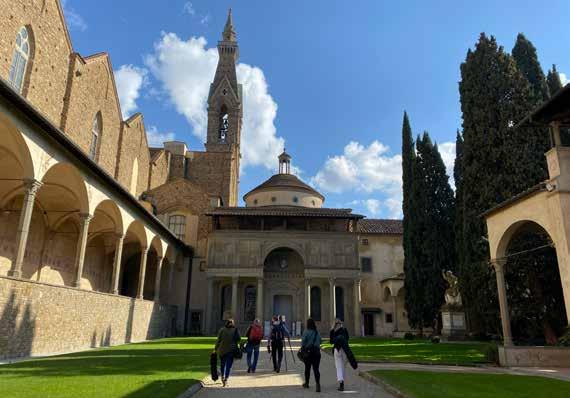


most Digital Humanities (DH) projects involve a lot of screen time — imagine a team working with their laptops in front of their desktop computer near a large monitor or projector. The DH project Florence As It Was (FLAW), led by Prof. George Bent, is no different with much time spent editing 3D models or gathering data on thousands of artworks. The goal of the project is to reconstruct the city the way it appeared at the end of the 15th century by creating 3D models of important structures, then adding photogrammetric models of the artworks that have been removed from their original locations in those structures and dispersed into museums across the world.
But in February 2022, the FLAW team had the exciting and non-virtual experience of traveling to Florence. Digital Humanities Librarian Mackenzie Brooks joined the team of six to assist in photographing and scanning additional structures, artwork, and sculptures. Given that she normally contributes metadata and web design skills to the project, she was thrilled to be able to learn more about the city she had been reading about for years. The team spent Washington Break in the center of Florence in easy walking distance to the Duomo Museum, where their main assignment was photographing dozens of sculptures and architectural elements. Their work took them to the off-limits second floor of the Baptistery, 160 steps up the Campanile, and behind the velvet ropes at Santa Croce. Evenings were spent transferring data from cameras to cloud storage for safe keeping (with breaks for pasta!). n
The results of the trip can be seen on the FLAW website: florenceasitwas.wlu.edu
DIGITAL HUMANITIES .folios - 18 - Fall - 2023
to see this project in action Check out the new documentary by the Leica Company available at: leica-geosystems.com/case-studies/ reality-capture/florence-as-it-was
Support for the Florence As It Was project provided by Donald and Sidney Gause Childress and George, Carol, and Catherine Overend. Photographs by Lorri Olan
The Florence As It Was crew descends on Santa Croce.
Above, left to right: George Bent, Dave Pfaff, Mackenzie Brooks, Elyssa McMaster, and Ava Boussy

DCI CAPSTONE
What do social treatises, fire insurance maps, and the Ring-tum Phi have in common? Mackenzie Brooks has the answer.
Two DCI minors and one independent study student completed DCI 393: Creating Digital Scholarship, the DCI capstone course. Their projects spanned time and space. Margaret Alexander, a Classics major, enrolled in the minor to continue work on a digital edition project she started in the summer of 2022 with Prof. Melissa Vise (History). Next, Charlotte Dross, a Strategic Communication major, chose to explore her passion for history by layering Sanborn fire insurance maps to understand the development of Lexington’s roads and alleys. Finally, Simona Radeva, a Journalism major, expanded on a project she began in DCI 103, a summer course taught through the Liberal Arts Collaborative for Digital Innovation (LACOL) consortium, to understand the treatment of women in the Ring-tum Phi! n

MARGARET ALEXANDER ’ 24
"Liber Consolationis et Consilii" Digital Edition
CHARLOTTE DROSS ’ 23
The Story of The Streets: Examining the development of infrastructure in Lexington, Virginia
SIMONA RADEVA ’ 23
Women Worded: A text analysis-based digital humanities project by Simona Radeva
CONGRATS TO OUR DCI PROGRAM GRADUATES!
Nayongi Borthwick ’23
Charlotte Dross ’23
Kate Fisher ’23
Riley Parker ’23
Simona Radeva ’23
.folios - 19 - Fall - 2023
Charlotte Dross dives deep into the development of local infrastructure in Lexington, Virginia in her DCI Capstone project "The Story of the Streets."
STUDENT SPOTLIGHT
HONORING OUR 2023 SENIOR STUDENT WORKERS
Laura Hewett showers lots of well-deserved praise on this year’s best of the best.
each year several departments in the University Library hire student assistants. Many of them stay all four years; some are only around for a few. These students touch almost every aspect of the library. They assist in providing the Washington and Lee community with services that aid in achieving their educational goals.
Then during the spring term, we ask our seniors to select a book that is meaningful to them. These books receive a bookplate that honors the students’ contributions to the Library. There is also a display on the Main Floor of Leyburn Library during spring term through graduation. n


We'd like to give one more THANK YOU to the students listed below. We wish them all the best — they'll be missed!
Access Services
COLE CAMELI
JAMAL MAGOTI
KIT LOMBARD
SOPHIA ROCHE
Research Services
ANNA BLACKBURN
DAN NGUYEN
KIT LOMBARD
VIVEK KUMAR
Administration
LEIA BARROW
STUDENT SPOTLIGHT .folios - 20 - Fall - 2023
Student workers Anna Blackburn , Vivek Kumar, and Kit Lombard show off their favorite books.
Think stats are boring? Au contraire mon frère — KT Vaughan begs to differ.
University Library By The Numbers
1,441,798 electronic books
657,510 print books, microforms, and bound serials
288,341
NUMBER OF VISITS TO LEYBURN LIBRARY through the main oor entrances
24 UNIVERSITY LIBRARY FACULTY AND STAFF (13 FACULTY; 11 STAFF)
NUMBER OF STUDENT STAFF: 34
Number of online databases: 216
656 research questions answered
9 DIGITAL CULTURE AND INFORMATION COURSES TAUGHT
142 GUEST LECTURES TAUGHT
2,172 students taught
Total enrollment in DCI courses: 102
.folios - 21 - Fall - 2023 DATA DIGEST

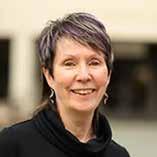

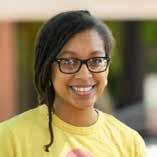
Pleased to MEET YOU
Ashley Evans (Law Library)
I was born and raised in Sevierville, Tennessee, home of Dolly Parton and the Great Smoky Mountains. I received my JD from the University of Kentucky and my MIS from the University of Tennessee. My first position took me across the continent to Anchorage, Alaska, where I worked for the Alaska State Court Law Library. I eventually wanted to move back closer to family, which led me to Lexington. In November 2022, I joined Washington & Lee as the Head of Collection Services for the Law Library. n
Wendy Rains (University Library)
I joined the University Libraries team in January 2023 as Office Manager and Friends of the Library Coordinator. My W&L career began in 2018 as Law Student Affairs Coordinator at the School of Law. Prior to working for W&L, I was a curriculum developer and facilitator at the Personal Transformation and Courage Institute where I enjoyed helping people of all ages get in touch with their personal core values and work with their limiting beliefs using a variety of experiential somatic exercises, mindfulness practices, and meditation. n
Kim Sims (University Library)
I graduated from UNC-Wilmington with a B.A. in History and from NC State University with a Masters in Public History, before beginning my archival career at Duke University. I then became the University Archivist at the College of William & Mary, before joining Appalachian State University in Boone, NC as head of the Special Collections Research Center and Associate Professor. I came to Washington & Lee in August to assume the position of Associate University Librarian for Special Collections and Archives. n
Amira Walker (University Library)
I grew up in the (then small) town of Mansfield, Texas and am solidly a 90’s kid. I spent my childhood playing outside until the streetlights came on, riding my bike, exploring the woods, chasing down the ice cream truck, and reading books. Despite collecting degrees (in Anthropology, Education, and now Library Science), I haven’t changed much. I’ve been a park ranger, taught high school English, baked pies for a farmer’s market, and was a stay-at-home mom. I’m thrilled to be at W&L where I can help connect people to resources. n
NEW FACES .folios -22 - Fall - 2023
CHECKING OUT LIBRARY MATERIALS HAS NEVER BEEN EASIER
Elizabeth Teaff explains.
This past spring, the University Libraries debuted a new self check-out system. Our previous self check-out software and hardware were not always user-friendly. Consequently, we had been looking to replace our current system for some time. After researching other self check-out products, and talking to colleagues at other libraries, we decided on Meescan.
Our new software is a cloud based software for checking-out library materials that is created and licensed by Meescan, a Canadian software company. The product has both a physical kiosk option and a phone app that can be used immediately after pulling books from the shelves. The software is branded to the University Libraries which creates a seamless patron experience.
Before we set up the product in our libraries, we asked our Library Student Library Board (LSAB) to stress-test the phone app. At a spring LSAB meeting, students downloaded the app to their phones and checked out books. They were excited to help with this test and learn about the features this new software offers. Our stress test was successful and we moved to a “soft opening” of Meescan at the end of the spring semester. We have been successfully running it in our libraries all summer and hope to promote the software more broadly this fall. n
You may use the following links to download the apps directly:
iOS: go.wlu.edu/librariesios
Android: go.wlu.edu/librariesandroid
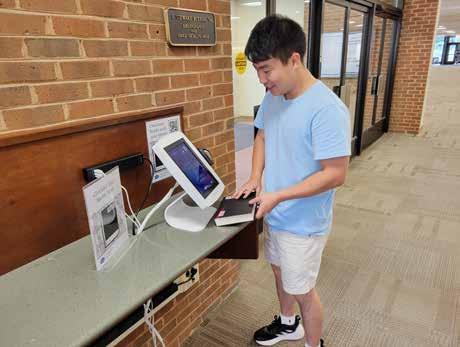
editors
Wendy Rains
KT Vaughan contributors
Brian Alexander
Mackenzie Brooks
Byron Faidley
Laura Hewett
Paula Kiser
Frances Richardson
Elizabeth Teaff
KT Vaughan designers
Jamie Lipps
Billy Chase
Emmaline Nelsen publisher
Washington and Lee University Library
204 W. Washington Street Lexington, VA 24450 coordinator
Wendy Rains
talk to us library@wlu.edu ON THE COVER: ORIGINAL ARTWORK INSIDE THE LEYBURN LIBRARY BY EMMALINE NELSEN folios
.folios - 23 - Fall - 2023
WAY OUT
Wonjun Jo tries out our new grab-and-go Meescan system.
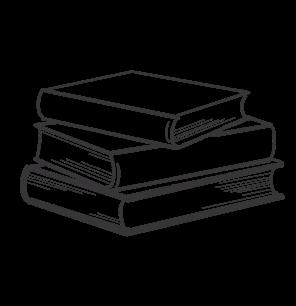
DISCOVER THE FRIENDS OF THE LIBRARY
We’re here to support the academic mission of Washington and Lee University through activities which strengthen the University Library’s collections and services. We aim to foster closer relations between the library and the community, stimulate the intellectual life of the library users, and support library programming through monetary and in kind donations.
library.wlu.edu/friends







 19th century barn-frame loom owned by Frances Richardson, affectionately known as “Violet.”
Opposite: Frances takes her audience back in time.
19th century barn-frame loom owned by Frances Richardson, affectionately known as “Violet.”
Opposite: Frances takes her audience back in time.

























